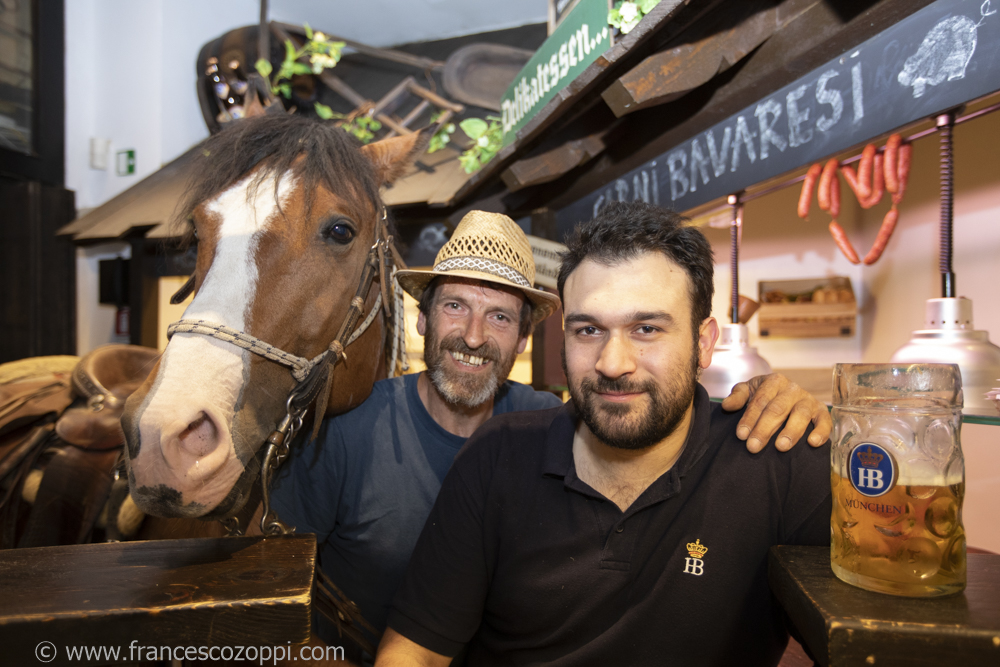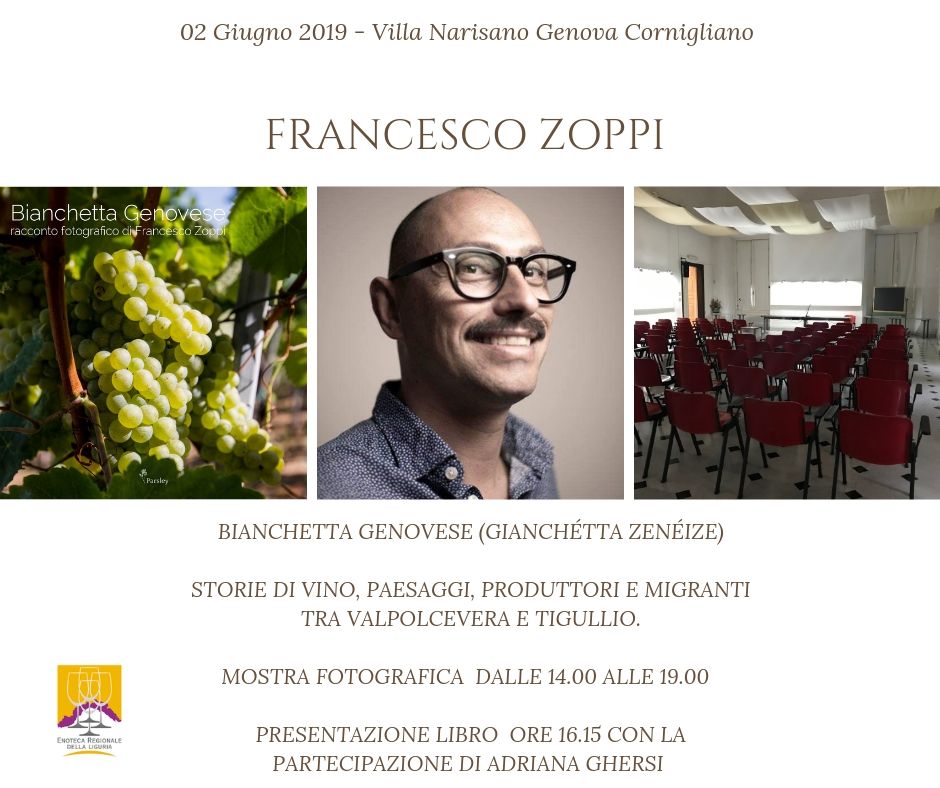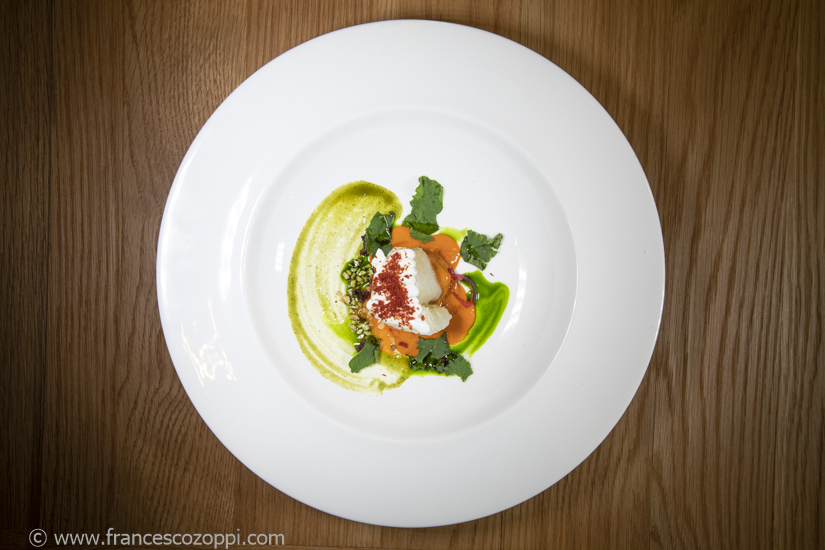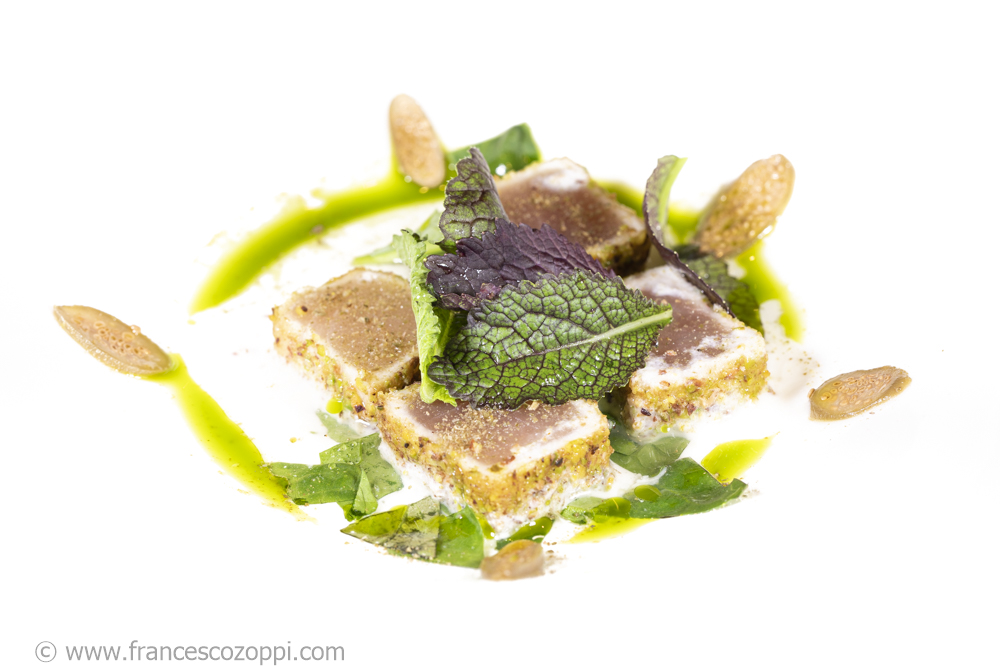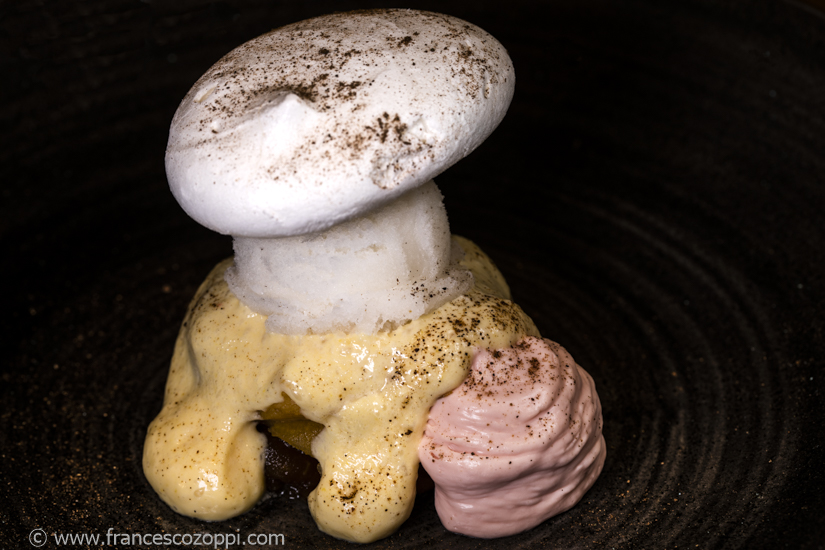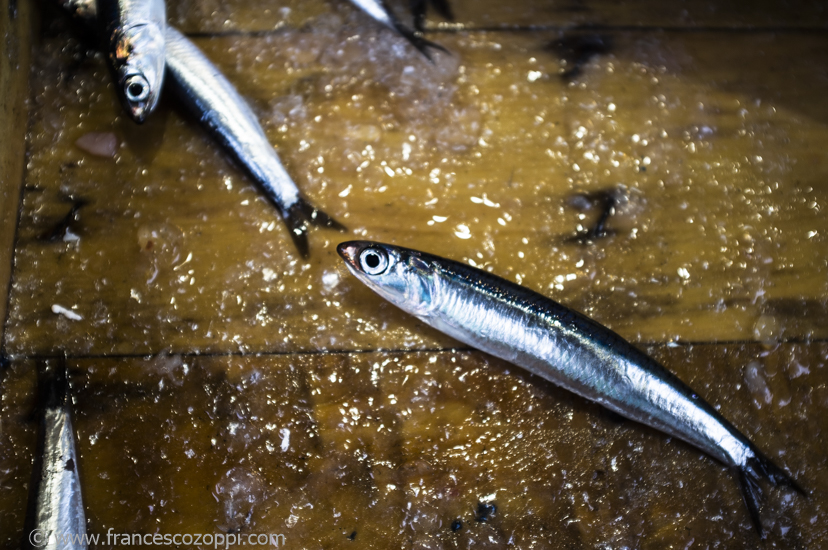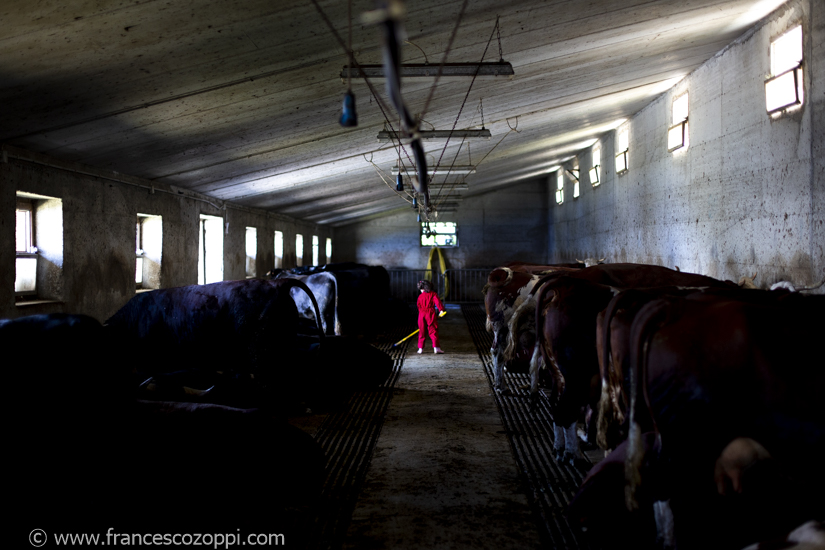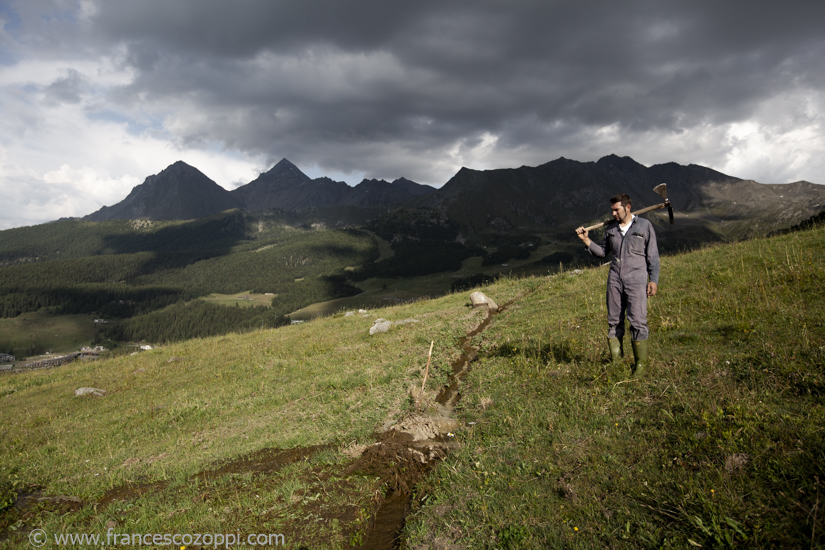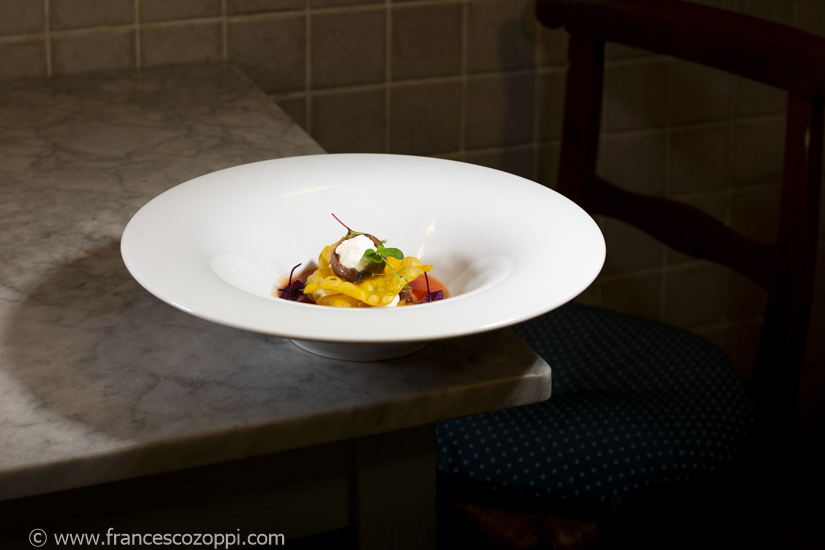Bianchetta Genovese: Civediamo a Cornigliano.
Bianchetta Genovese: Civediamo a Cornigliano. Exhibit and publication event in cooperation with Enoteca Regionale della Liguria and CIV Cornigliano
Speakers: Adriana Ghersi (writer) and Francesco Zoppi (photographer)
Where: Centro Civico Cornigliano
Baccalà con caponata contemporanea
Baccalà con caponata contemporanea by Moreno Cedroni
Thirty-five years ago, two journeys began. The first finished soon at the Cape of Good Hope, where the Indian and South Atlantic oceans meet, combining and yet somehow remaining distinct from one another”.
“The second journey continues to this day, after 35 years—it is Madonnina del Pescatore. When I remember that first voyage, I realize how impressed I was by those masses of water, which filled me with the desire to replicate something similar in my cooking, a meeting, and fusion of two equally powerful forces: creativity and tradition.” On the occasion of Slow Fish, and as a guest of Eataly, Moreno Cedroni will help us to relive those years through a series of courses that trace an amazing Italian success story. ( Source https://slowfish.slowfood.it/en/event/moreno-cedroni-a-journey-through-time/)
Alalunga fritto poco cotto, panure al pistacchio, mandorle, senape e cucunci
Alalunga fritto poco cotto, panure al pistacchio, mandorle, senape e cucunci by Moreno Cedroni
Restaurat: Il Marin
Event: Slow Fish 2019 Edition
Thirty-five years ago, two journeys began. The first finished soon at the Cape of Good Hope, where the Indian and South Atlantic oceans meet, combining and yet somehow remaining distinct from one another”.
“The second journey continues to this day, after 35 years—it is Madonnina del Pescatore. When I remember that first voyage, I realize how impressed I was by those masses of water, which filled me with the desire to replicate something similar in my cooking, a meeting, and fusion of two equally powerful forces: creativity and tradition.” On the occasion of Slow Fish, and as a guest of Eataly, Moreno Cedroni will help us to relive those years through a series of courses that trace an amazing Italian success story.
Israel Ferrel prepared Ossimoro
In the picture: Israel Ferrel prepared Ossimoro
Chef: Israel Feller
Restaurant Boccon Divino Via Entella 18 Chiavari (GE)
love…love…love anchovies
love…love…love anchovies
Do what you love
Do what you love …the picture has been taken in Pila (Valle d’Aosta) close to the Alpine Pasture; it is a series from the project De la vache à la fontine.
A surreal calm surrounds these places, which resist the changes of time, proudly continuing with their antique traditions. There are two protagonists in the thousand year old history of the Valle d’Aosta tundra: man and cow. The ancient practice of fontina cheese making is passed down from father to son, and still today solitary and silent shepherds show the next generation, who are now mainly Moroccan immigrants, consequently rewriting history into a genuine multi-cultural society, translates them into richness for man and his land.
Working days repeat themselves cyclically during the season when the cows are brought out for mountain pasture for a period that lasts from May to September, while during the winter they rest in the cowsheds placed down in the dales, where a milder climate and a forage based on hay ensure that the cheese gets that unique flavor and nutritional characteristics. When the milking of all cows ends it’s the turn of milk processing; the milk is put in huge copper pots and the rennet is used to thicken it. After 45 minutes in this coagulation process the milk changes status and you can see lots of lumps, like the cottage cheese. Then this lumpy milk is warmed up to 40°C until it becomes a oft cream. This soft dough is then transferred in circular containers in order to be put under pressure and release all liquids left. Then the rounds of cheese are aligned on wood boards to mature in big cellars dug in the mountain rocks.
Hundred liters of milk are used to make a round of fontina, creating a tight relationship like the one between man and cow…de la vache à la fontine.
More pics here
Also this is fontina – Sandro Bonin
The picture Also this is fontina – Sandro Bonin has been taken in Pila (Valle d’Aosta) close to the Alpine Pasture; it is a series from the project De la vache à la fontine.
A surreal calm surrounds these places, which resist the changes of time, proudly continuing with their antique traditions. There are two protagonists in the thousand year old history of the Valle d’Aosta tundra: man and cow. The ancient practice of fontina cheese making is passed down from father to son, and still today solitary and silent shepherds show the next generation, who are now mainly Moroccan immigrants, consequently rewriting history into a genuine multi-cultural society, translates them into richness for man and his land.
Working days repeat themselves cyclically during the season when the cows are brought out for mountain pasture for a period that lasts from May to September, while during the winter they rest in the cowsheds placed down in the dales, where a milder climate and a forage based on hay ensure that the cheese gets that unique flavor and nutritional characteristics. When the milking of all cows ends it’s the turn of milk processing; the milk is put in huge copper pots and the rennet is used to thicken it. After 45 minutes in this coagulation process the milk changes status and you can see lots of lumps, like the cottage cheese. Then this lumpy milk is warmed up to 40°C until it becomes a oft cream. This soft dough is then transferred in circular containers in order to be put under pressure and release all liquids left. Then the rounds of cheese are aligned on wood boards to mature in big cellars dug in the mountain rocks.
Hundred liters of milk are used to make a round of fontina, creating a tight relationship like the one between man and cow…de la vache à la fontine.
More pics here
Gazpacho, burrata, acciughe, lasagnetta fritta.
Gazpacho, burrata, acciughe, lasagnetta fritta
Chef: Simone Vesuviano
Restaurant: Trattoria dell’Acciughetta


